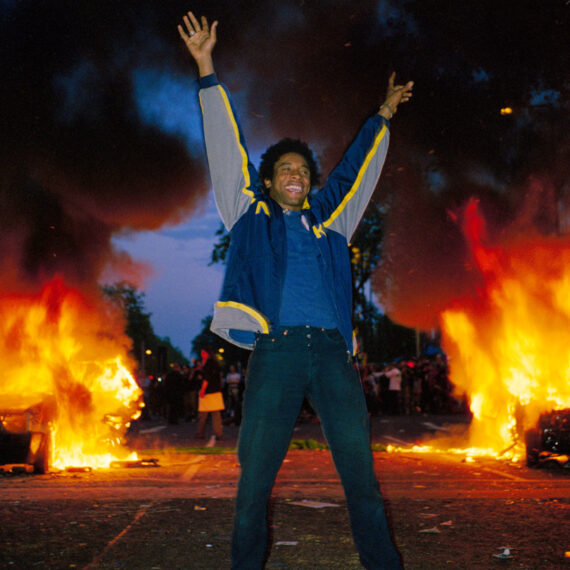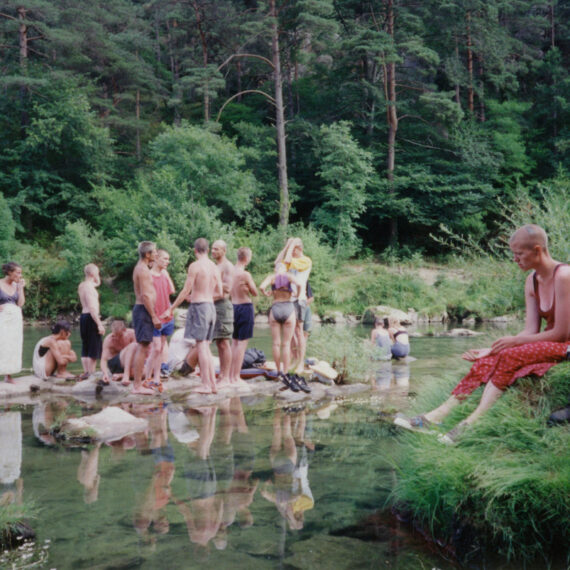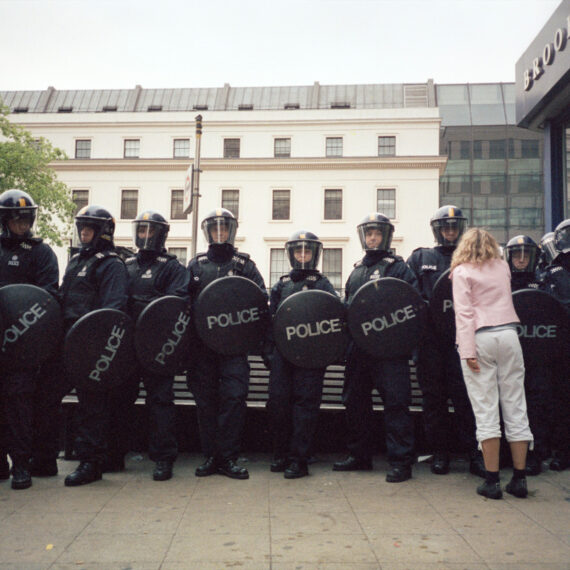Raves and Riots Constellation
“To me, the same thing sometimes happens on a demonstration as in an illegal rave. They’re both slightly edgy gatherings… you get a sense of the normal world being suspended and you experience these brief, totally free moments”
Vinca Petersen
Raves and Riots Constellation brings together a collection of seminal diaristic photographs drawn from a period spanning 1990–2004, documenting the artist’s experiences as part of the free party and traveller community. The images juxtapose the sense of escapism and euphoria of this unique cultural moment with the oppressive political climate that outlawed the lifestyles of those responsible for Britain’s rave scene.
The free party wave enraptured Britain’s young generation following the explosion of rave, techno and ecstasy in 1989, when crowds of up to 25,000 gathered in countryside locations for illegal all-night parties. Whilst the movement was born of music and hedonism, it quickly became a vehicle for civil disobedience and defiance of authority, as portrayed in images of Petersen and her friends attending protests contesting the political backlash against their way of living. The 1994 Criminal Justice Bill created a hostile environment for the squatters, travellers and rave organisers that made up the artist’s immediate social circle. In response, Petersen and those closest to her adopted a nomadic lifestyle, transporting powerful sound systems across Europe in truck convoys, setting up parties in countryside locations on the outskirts of urban areas. Petersen remained on the road until a few months before the birth of her son in 2005.
Despite the movement’s iconic significance, photographic documentation of the rave scene is sparse, as the community was wary of outsiders taking pictures for fear of legal repercussions, so cameras were routinely confiscated at parties. Petersen’s photographs do not merely document a movement, but acquaint us with a cast of personalities and narratives that expose the precarious existence embraced by her community in order to preserve a distinctive sense of freedom and expression. Working with inconspicuous cameras, Petersen’s insider’s perspective is at times contemplative and unflinching, and elsewhere frenetic, glimpsing the spontaneity of moments in which the artist barely looks through the viewfinder before clicking the shutter. Whether through empathetic personal proximity to her subjects or atmospheric immersion in each scene, Petersen’s implied presence and participation in the world she depicts is an underlying constant.




